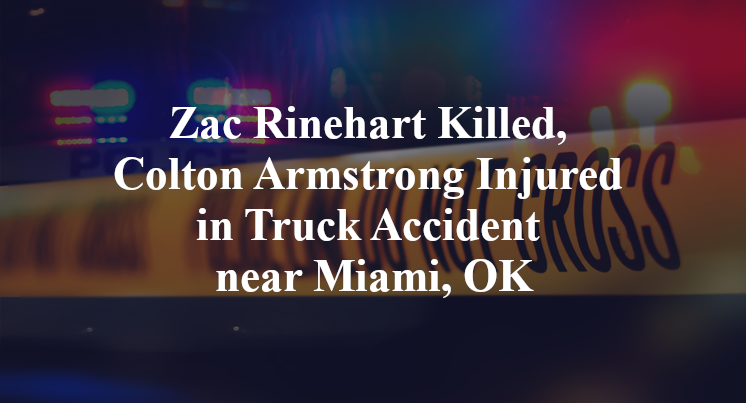Zac Rinehart Killed, Colton Armstrong Injured in Truck Accident near Miami, OK
Ottawa County, OK — August 18, 2025, Zac Rinehart was killed and Colton Armstrong was injured in a truck accident at about 1:30 p.m. on eastbound Interstate 44/Will Rogers Turnpike.
Authorities said an Oklahoma Turnpike Authority worker was picking up debris along the highway near Miami when he was hit by a semi-truck that had drifted onto the shoulder. The semi also hit a parked state truck with another worker inside.

Worker Zac Rinehart, 36, died at the scene of the crash, according to authorities, while the worker who had been in the truck, Colton Armstrong, was flown to a Joplin hospital with critical injuries.
The truck driver was not hurt, authorities said.
Authorities have not released any additional information about the Ottawa County crash at this time. The accident is still under investigation.
Commentary
When a commercial truck drifts off the road and hits two highway workers, most people understandably want answers. How does something like this even happen? Was the truck driver asleep? Distracted? Did something break or go wrong with the truck? At this point, we don’t know. But those are exactly the kinds of questions that must be answered through a proper investigation.
What’s reported so far is that a semi-truck veered onto the shoulder of I-44 and struck an Oklahoma Turnpike Authority worker who was picking up debris, as well as a parked state vehicle with another worker inside. The driver was reportedly unhurt, but one man is dead and another critically injured. The official line is that the crash is still under investigation, but that doesn’t mean the public shouldn’t be asking hard questions.
The first thing I’d want to know in a case like this is whether the truck had working in-cab cameras or other safety technology. Many commercial vehicles are equipped with forward-facing and driver-facing cameras that can reveal what the driver was doing in the moments leading up to a crash. Was he looking down at his phone? Nodding off? Overcorrecting after veering? If no cameras are available, then phone records, GPS logs and the truck’s engine control module (ECM) may offer clues. All of those are essential pieces of evidence in getting to the truth.
Another angle that often gets overlooked is the role of the trucking company. Depending on how this driver ended up behind the wheel, questions could arise about their hiring practices. Was this someone with a clean record and proper training? Or was he hired without enough vetting, maybe after being fired from previous jobs? I’ve seen cases where a company’s failure to properly screen and evaluate drivers turned out to be the real root of the problem.
Even the truck’s maintenance history matters. A steering or brake failure, though rare, can’t be ruled out until someone combs through the inspection logs and repair records. That kind of evidence often gets buried unless someone makes a point to preserve and analyze it before it disappears.
Ultimately, the purpose of these investigations isn’t just to check boxes or assign blame. It’s to find out what really went wrong and why. When someone’s life is cut short on the job and another hangs in the balance, the public deserves more than vague statements about an “ongoing investigation.” We need real answers backed by hard evidence.
Key Takeaways:
- It’s unclear why the truck veered onto the shoulder. Possible causes include distraction, fatigue or equipment failure.
- Investigators should examine dash cams, ECM data, phone records and driver history to uncover what happened.
- The trucking company’s role, including hiring and training practices, may be just as important as the driver’s actions.
- Evidence needs to be preserved quickly to ensure accountability for everyone who contributed to the crash.
- The goal is to uncover the full story. Not just for legal reasons, but to prevent similar incidents from happening again.

“These are essential reads for anyone dealing with the aftermath of a truck wreck”– Attorney Cory Carlson